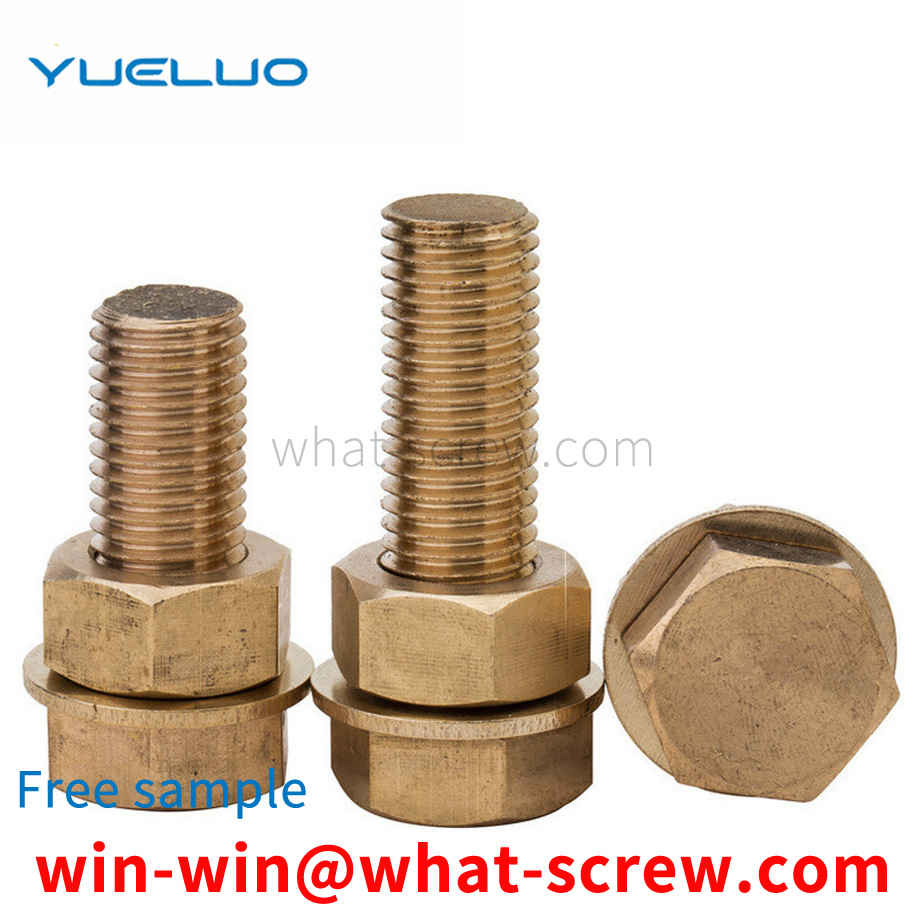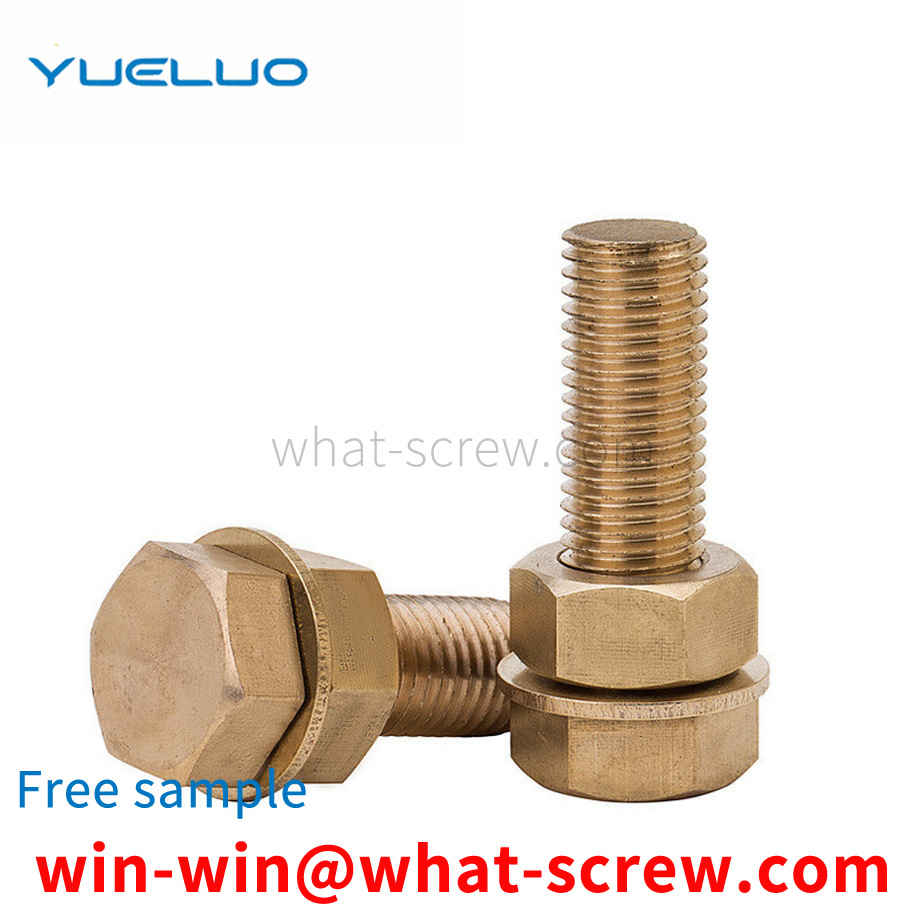Heat treatment technology has a crucial impact on high-strength fasteners, especially its intrinsic quality. Therefore, in order to produce high-quality high-strength fasteners, advanced heat treatment technology and equipment must be available. 1. Status of heat treatment of high-strength fasteners High-strength fasteners have 4 performance levels, namely 8.8, 9.8, 10.9, and 12.9. These four grades of high-strength fasteners must be quenched and tempered. The purpose of heat treatment and tempering is to improve the comprehensive mechanical properties of fasteners to meet the specified tensile strength value and yield ratio of the product. Therefore, the quenching and tempering process has strict requirements on raw materials, furnace temperature control, furnace atmosphere control, quenching medium, heat treatment quality inspection and control, etc.
Figure 1 is a schematic structural diagram of Guangdong Yueluo Hardware Industry Co., Ltd. Figure 2 is a front view of the structure of the riveted positioning block. FIG. 3 is a top view of the structure of the riveted positioning block. Figure 4 is a front view of the structure of the riveting lower die. Figure 5 is a side view of the structure of the riveting lower die. 1, I is a rivet, 2 is a riveting positioning block, 3 is a product, 4 is another product, and 5 is a riveting lower die. [0017] Referring to Figure 2, Figure 3, 2-1 is a positioning pin, 2-2 is a rivet hole, and 2-3 is a through hole. Referring to Figure 4, Figure 5, 5-1 is a positioning hole, 5-2 is a guide block, 5_3 is a countersunk screw hole, and 5_4 is a vacant hole.
The cylindrical pin is mainly used for positioning and can also be used for connection. It is fixed in the pin hole by means of interference fit. Cylindrical pins used for positioning are usually not subject to load or a small load, the number is not less than two, distributed in the symmetrical direction of the overall structure of the connected parts, the farther the better, the pin is in each connected part The length is about 1-2 times the minor diameter. Cylindrical pins can also be used as shafts, and a straight shaft can also be used as cylindrical pins or even centering pins. So what's the difference between a shaft and a pin? The shaft can be used to transmit torque, bear bending moment and torque, and the cylindrical pin can be used for positioning, bear extrusion force and shear force. In a sense (such as small equipment), cylindrical pins can also be used as shafts.
The utility model proposes an installation structure which adopts a T-shaped bolt to cooperate with a channel, which includes a bolt head, an installation channel, a nut and a washer. The upper end of the screw rod is provided with a screw head, the two side walls of the bolt head are respectively provided with an arc surface, the two ends of the bolt head are provided with protrusions, and the interior of the installation channel is provided with an inner cavity, There is an opening above the installation channel, the bolt head is installed in the inner cavity, the nut is installed on the screw, the nut is located above the installation channel, and the gasket is installed on the installation channel and the nut between.
Nuts and washers are both small and medium-sized components of the tension reinforcement system, and they are easily lost on the construction site when used separately, which is not conducive to the storage management of turnover materials; 3) During the process of formwork support and removal, they must be installed individually And demolition, thus adding a construction process, affecting the efficiency of construction.
We have many years of experience in the production and sales of screws, nuts, flat washers, etc. The main products are: national color screws, flange nuts with washers, knock-type explosion screws, GB93 washers and other products, we can provide you with suitable fastening products piece solution.



















 Service Hotline
Service Hotline




